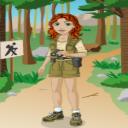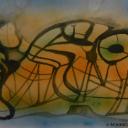Yahoo Answers is shutting down on May 4th, 2021 (Eastern Time) and beginning April 20th, 2021 (Eastern Time) the Yahoo Answers website will be in read-only mode. There will be no changes to other Yahoo properties or services, or your Yahoo account. You can find more information about the Yahoo Answers shutdown and how to download your data on this help page.
Trending News
Some questions regarding your experiene with tents?
1. Describe your experiences with condensation inside backpacking tents.
2. What conditions have you found result in the most serve condensation.
3. What steps have you taken in an attempt to resolve condensation within a tent? Have they been effective?
4. What constraints does the consumer place upon a tent design?
5. Approximately how often do you replace a tent?
12 Answers
- chrisLv 71 decade agoFavorite Answer
As a Scouting director I have used hundreds of tent brands and designs from the el cheapos you get at swap meets to the high end mountaineering styles that the average man could not afford. All of them developed condensation to some degree. Those with the least had the best ventilation and were lighter those that had more tended to be heavier. As another stated already there is a trade off in ventilation and heat retention that's why there are different tent designs for weather conditions and style of choice in camping needs ie summer tents , 3 season, tents and winter expedition tents.
The worst wet weather conditions resulted in the most condensation. This adds to water seepage through seams and materials and ground. Tent designs here with solid tub style flooring and sheltered windows allowed better evaporation but again a trade off in heat retention.
The only effective way to reduce condensation is ventilation and water entrance since moist air rising from the floor and through body evaporation are the causes these two can be addressed through better floor construction and water resistant materials. Tent placement is critical in using the tents design to its fullest potential ie sagging tents. Setting the tents location also benefits it's design putting the tent where it will get full sun during the day and breezes at night.
I find that as a major buyer of tents that the quality of tent design as for wear and tear is the number one issue, 2nd is ease of set up and 3rd is price. The majority of tent makers are fairly close in price to each other in the various types of designs and in some cases price is not a reflection of the quality you get. I have used tents that cost close to $700 that did not perform as well as a tent that cost $75 or last as long.
For me tents get replaced as needed, again some last years some only a season. I have had my best tents last 10 years or more and these were the lower priced tents in our supply. I have a strong preference for Coleman and REI products
- ScottLv 71 decade ago
1: Seldom been an issue.
2: When 3 people are inside, the air is very still, ground is damp, and substantial difference in temp between night and day. The rain fly can act as a solar still and cause moisture to condense and drip onto the main tent! My best is a so-called 4 person tent, meaning it is cramped with 3, really nice for two and a little much for solo.
3: Quality tent made of quality materials, breathable fabric, good ventilation. And the use of a ground tarp. Although I am leary about suggesting any flame in a tent, in cold (0F or below) when using my tent rather than a snow shelter, I hang a candle lantern. The candle provides enough additional energy to keep the water vapor from breathing from turning into snow inside the tent! It allows the vapor to stay vapor and move as such through the breathable fabric.
4: The constraints I put on my tent was performance! Weight was a secondary issue, ability to stand snow and wind determined materials. Poor weather performance demanded a large vestibule. For me (at the time) cost was the least of my concerns. I believe that the driving concern for most consumers is cost, and they will spend less on a tent than a single night in a cheap-clean motel. They know there are high performance tents, they just want one for $35.00!
5: Never! I still have and use a tent I got in 1982, although it is not my primary shelter it is very light for short solo hikes when I am certain the weather will be fair.
My best, I got in about 1996. It has been used to -23F, the rain of Vancouver Island, the wind of central Mt. and has been nearly buried in snow.
- c_kayak_funLv 71 decade ago
I've owned 8 backpacking tents and shared many other models that other's owned. I used to lead trips for an outfitter and taught winter backpacking and mountaineering so i have used them for extended periods in everything from steamy subtropical conditions to winter temps of down to 20 below.
The best tent I ever owned for mitigating condensation was the old Cannondale double wall tents they made in the mid to late 1970's. Both the inner wall and outer "fly" were attached to the tensioned flexing a-frame and maintained a 4 inch air space between them. The outer "fly" layer was breathable ripstop, just like the inner wall so there was no condensation. Any rain that hit it ran down the outside or seeped through to the taut underside and ran down to the ground. I never got wet in that tent and it was the most windproof and quiet tent I ever owned for sand island camping because you could bury the edge of the fly in sand and, pointed into the wind, the design shed wind well. it was also warm because the double wall had an insulating effect. It also had a huge no-floor vestibule that you could cook in and stash gear, including a bicycle. ONly drawback to it is weight -- can't separate the fly and tent and the whole thing wieghs over 8 pounds, But you can sleep 3 people in the tent and put two in the vestibule in a pinch,
I still have the tent but have not used it for about 15 years.
If you want a marketing survey, you should be willing to pay for it, by the way. So i am not answering your 1 through 5 questions.
- 1 decade ago
1. When camping in the winter, you need to leave some ventilation in your tent. When it is all closed up, the air inside the tent can make you think it's raining in the tent. Water is dripping from everywhere.
2. Cold, wet weather
3. Allow for ventilation. Air flow will stop the condensation.
4. I like double doors, vestibules for each door, plenty of ventilation (no-seeum-mesh), a rain fly that connects to the tent where the poles connect. Also, tie-off points that allow you to expand the rain fly away from the tent for more ventilation.
5. I've done a lot of camping with the Boy Scouts. With the best of care and a good quality tent, they may last about 5 years.
Source(s): http://fossilbackpackinggear.com/ - How do you think about the answers? You can sign in to vote the answer.
- Mark NLv 41 decade ago
1) Damp cold weather
2) winter camping seems to cause the worst condensation because it freezes to the inside before penetrating out. Be sure to open all the doors when you get out in the morning, let it air out. Youcan do this while you are preparing breakfast, etc.. Break your then down last to allow it to ventilate and dry. Be sure to clean it out and let it dry completely after you get home, before putting it away
3)Take the rain fly off during non-rainy weather. The problem here is that it isn't as warm in the tent, so it defeats the purpose.
4)The most popular tents these days are free-standing designs that don't need stakes. This usually means a dome tent, but there are MANY designs available. Check out REI, Campmoor, many others
5) I have had my dome tent 21 years, my 200 c.i. backpack 24 years. If you get good equipment and TAKE CARE OF IT, it will last a long time. Come to think of it, I don't think there is anything very special about that tent--- I think it is just a basic one we got at Wal-Mart, I have just taken care of it.
- MountainManLv 71 decade ago
1] Frost condensation under cold, high-humidity conditions.
2] No problems because I generally allow the tent to dry before packing or air-out less than twenty-four hours after taking down the tent.
3] Increase ventilation at the risk of heat loss.
4] A rain fly must withstand extremes in wind and water intrusion: tight covering should not rely on staking, since ground may not be suitable for solid staking.
5] Due to wear and tear, I never replaced a tent through decades of use.
Source(s): http://cascadedesigns.com/msr/tents/category - JimLv 41 decade ago
1. Single wall tents condense considerable water vapor, especially in cool conditions.
2. When it is raining rain drops can actually knock drops of condensation off of the inside of the tent.
When it is warm out or sunny during the day condensation is not dangerous because you can dry things out and you aren't likely to freeze to death. But in fall and spring it can be wet or cold all day and you never dry out. More severe then.
3. Double wall tents have solved that problem for me. My tents are not top of the line, but they do a swell job. In summer I sometimes sleep under a tarp, there you need lots of ventilation.
4. Weight, volume, storm protection. Climbers and winter campers need better, stronger tents with alcoves for storage and cooking so they usually have more SF and weigh more.
5. Difficult question. I still have some from 20 years ago. But they are rarely used. My latest tent is about 3 years old and I would replace it to get a lighter one, not because it is worn out. More often than not I double up with someone and use their newer, larger, better 2 person tent.
6. The ideal tent for me is a two person 3 season tent with two doors like the new REI half dome tent: A nice compromise of weight and size and convenience.
Source(s): 30 years of climbing/hiking/backpacking in Alaska, California and Washington. - squidyLv 61 decade ago
I second everything Clayton says (ventilation is definitely the most effective way of keeping condensation low.. I NEVER sleep without at least 2 doors/windows/vents open to let air flow through... it's not worth the heat you will retain by keeping them closed, because wet=cold) except the last part. A good tent should last way more than 5 years. I've never actually had to replace a tent because of it wearing out. The oldest tent my family owns is older than me, (I'm 25) and we still use it.
Back to condensation.. the rainfly must never touch the sides of the tent. Water will come in through these points. Also, one tent of mine has fabric loops instead of hooks to hold the poles on. The loops are sewn straight into the seams of the tent, and water comes down them and drips from the ends inside. I wouldn't get a tent with this design again.
And don't set up your tent in an indentation.
- caseyLv 51 decade ago
Best tent ever made is a $12 tarp. I camp out year round in the rain, snow, everything the Sierra Nevada Mts. do and a tarp works just fine.
- Anonymous5 years ago
Hi Benny, I think you have something different on your mind besides a Pup Tent..If a woman answers get flowers and a Pup Tent.. Lol.. Get that Troll Benny!!! Your Friend, poppy1









